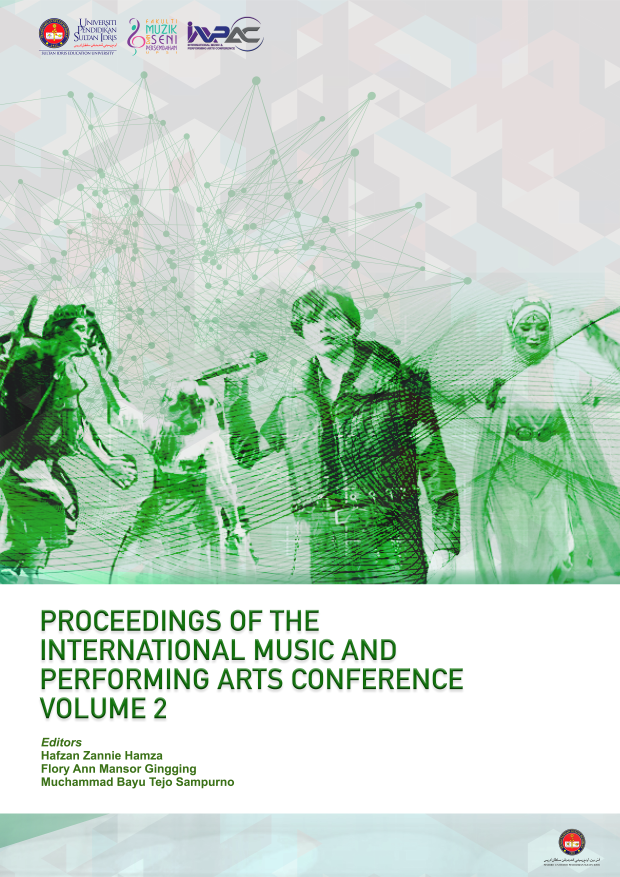A Comparative Study the ‘Tukang Karang’ of Previous and Present Era in Boria Performance at Penang
DOI:
https://doi.org/10.37134/impac.v2.12.2024Keywords:
boria, rangkap karangan, spontaneous, traditional theatre, tukang karangAbstract
One of the traditional performing arts originating from Penang is Boria, which has undergone various changes since the 19th century. Originally, Boria was performed to lament the historical events at Karbala, but it has since been adapted to address current issues. Boria performances consist of two segments: a sketch or acting segment (first segment) and singing accompanied by music and dance (second segment). One of the key components of Boria is the tukang karang, who serves as the lead singer and brings the performance to life in the second segment. This study aims to compare the role of the tukang karang from a historical perspective, showing how changes over time have affected Boria performances. A qualitative approach is employed by examining historical sources, conducting interviews with Boria practitioners, and observing Boria performances. The results indicate significant differences in the approach of the tukang karang between the past and the present. In the past, the tukang karang created rangkap karangan spontaneously, whereas now, the rangkap karangan are prepared in advance. This change reflects the need to adapt to contemporary times. By understanding the comparison between the tukang karang of the past and present, this study provides readers with a valuable historical perspective, ensuring that important knowledge and experiences are not lost. It also serves as a useful reference for other researchers, offering in-depth data and analysis on the role of the tukang karang in Boria.
Downloads
References
Bernama. (2024). Penang Festival revives Boria tradition with vibrant procession and popular artistes. Dicapai pada 31 Oktober 2024, daripada https://www.bernama.com/en/news.php?id=2314078.
Bujang, R. (1977). The Boria: A study of a Malay theatre in its socio-cultural context (PhD Thesis). University of Hull.
Jabatan Kebudayaan dan Kesenian Negara. (2023). 22 & 23 Julai 2023: Teater tradisional Boria - “Kembara Boria-Satu Perjalanan”. Dicapai pada 10 Oktober 2024, daripada https://shorturl.at/orT8f.
Jabatan Kebudayaan dan Kesenian Negara Negeri Pulau Pinang. (2008). Sejarah dan perkembangan Boria di Pulau Pinang. Penerbit Jabatan Kebudayaan dan Kesenian Negara Negeri Pulau Pinang.
Mahani Musa. (2003). Boria Muharam: Antara kreativiti dan realiti masyarakat Melayu Pulau Pinang abad ke-19 dan ke-20. Wacana Seni Journal of Arts Discourse, 2, 19–39.
Mahani Musa. (2010). Jawi Peranakan dan Boria. Dalam Omar Yusoff & Jamaluddin Aziz (Eds.), Jawi Peranakan di Pulau Pinang: Ekspresi sebuah identiti (hlm. 105–120). Penerbit Universiti Sains Malaysia.
Mohamed Ghouse Nasuruddin. (2000). Teater tradisional Melayu. Kuala Lumpur: Dewan Bahasa dan Pustaka.
Nurul Jazlina, Nor Aziera, Mazlina, & Nik Azliza. (2022). Seni persembahan dikir barat: Warisan seni kebanggaan Negeri Kelantan. Jurnal Sejarah Lisan Malaysia, 6(2), 44–61.
Paharul Rozi, N. R., & Amirrul, A. A. (2023). Perubahan peranan pemuzik dalam persembahan Boria awal abad ke-21. Jurai Sembah, 4(1), 1–8.
Rabinowitch, T. C. (2020). The potential of music to effect social change. Music & Science, 3, 1–6. https://doi.org/10.1177/2059204320939772
Rahmah Bujang. (1987). Boria, a form of Malay theatre. Singapore: Institute of Southeast Asian Studies.
Ramnah Ramli, Mohd. Yusof Bakar, & Abdul Samat Salleh. (2013). Dialek Pulau Pinang dalam sketsa Boria. Dalam Kearifan tempatan: Pengalaman Nusantara: Jilid 3 - Meneliti khazanah sastera, bahasa dan ilmu (hlm. 50–70). Penerbit Universiti Sains Malaysia.
Shakila Abdul Manan. (2016). Boria: Penang's unique Malay-Islamic cultural heritage. KEMANUSIAAN, 23(1), 25–47.
Downloads
Published
Issue
Section
License
Copyright (c) 2024 Noor Rafizal Paharul Rozi, Muhammad Faisal Ahmad (Author)

This work is licensed under a Creative Commons Attribution-NonCommercial-NoDerivatives 4.0 International License.
Authors retain copyright and grant the Proceedings of the International Music and Performing Arts Conference (IMPAC Proceedings) the right of first publication.
This licence permits unrestricted use, distribution, and reproduction in any medium, provided the original work is properly cited.




